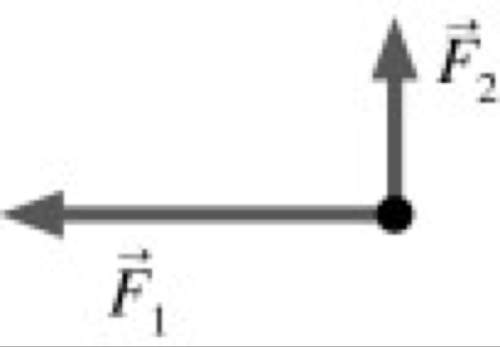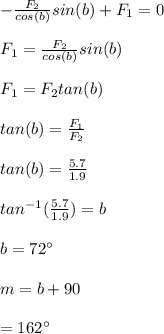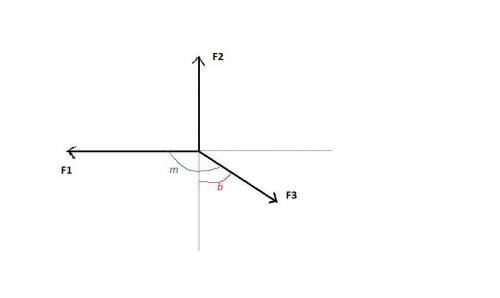
Physics, 08.10.2019 05:30 hunterkerlin20p3l6ff
As shown in the diagram, two forces act on an object. the forces have magnitudes f1 = 5.7 n and f2 = 1.9 n. what third force will cause the object to be in equilibrium?
3.8 n at 108° counterclockwise from
f1->
6.3 n at 162° counterclockwise from
f1->
3.8 n at 162° counterclockwise from
f1->
6.3 n at 108° counterclockwise from
f1->


Answers: 3


Other questions on the subject: Physics

Physics, 22.06.2019 14:10, chuchi24
The number of passengers who arrive at the platform of a subway station for the 10 am train is a random variable with a mean of 120 and a variance of 16. find the lower bound of the probability that there will be between 100 and 140 passengers (round off to second decimal place).
Answers: 3


Physics, 23.06.2019 11:40, edenlbarfield
As the ball rolls down the ramp, there are changes in kinetic and potential energy. how much kinetic energy does the ball have when it reaches point b? a) 0j b) 25j c) 50j d) 100
Answers: 3

Physics, 23.06.2019 14:30, solizpaco7124
An elevator is initially moving upward at a speed of 12.60 m/s. the elevator experiences a constant downward acceleration of magnitude 3.60 m/s2 for 2.97 s.
Answers: 1
You know the right answer?
As shown in the diagram, two forces act on an object. the forces have magnitudes f1 = 5.7 n and f2 =...
Questions in other subjects:

Mathematics, 22.02.2021 20:30

Arts, 22.02.2021 20:30


Physics, 22.02.2021 20:30



Mathematics, 22.02.2021 20:30





 and
and  are known
are known

 and b) and we have 2 equations.
and b) and we have 2 equations.






